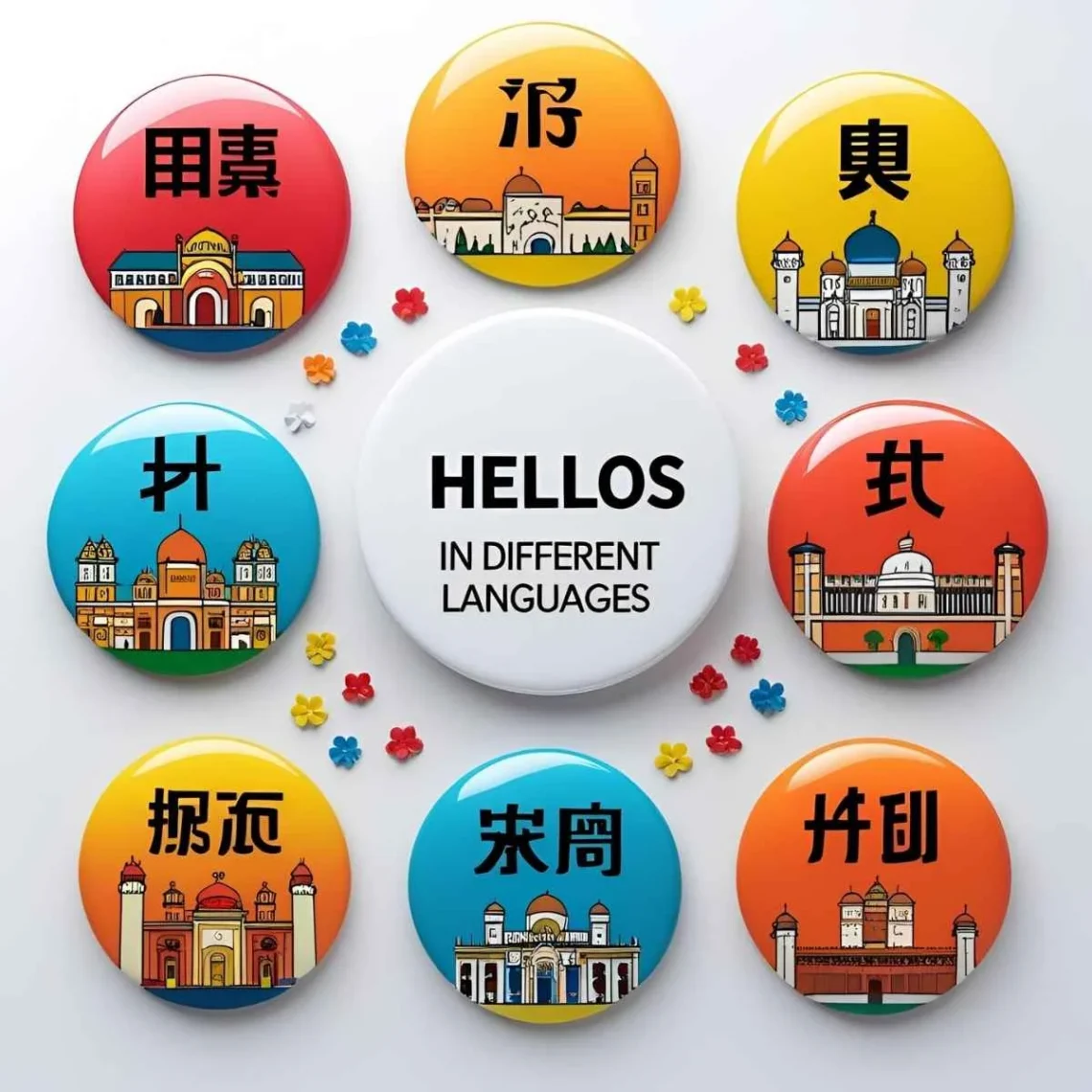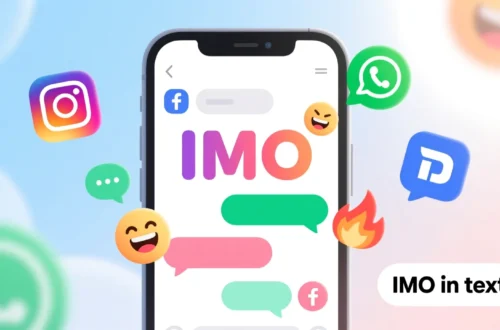Picture a traveler stepping off a train in Rome, greeted with a warm “ciao” by a local. That simple word, “hello,” sparks a connection, opening doors to new friendships and experiences. Across the globe, the term for “hello” varies, yet it universally embodies warmth and openness.
For instance, whether it’s a cheerful “salaam” in a Cairo bazaar or a melodic “kia ora” in a New Zealand village, this greeting reflects humanity’s shared desire to connect, shaped by each culture’s unique spirit.
Let’s embark on a linguistic journey to explore how people say “hello” in different languages and what these greetings reveal about their communities.
Reference Table: “Hello” in Different Languages
| Language | Word/Phrase | Cultural/Linguistic Insight |
|---|---|---|
| French | Bonjour | Means “good day,” used formally and casually in France. |
| Spanish | Hola | A versatile greeting, used across Spain and Latin America. |
| Italian | Ciao | Informal and friendly, also used for “goodbye” in Italy. |
| German | Hallo | A straightforward greeting, common in casual settings. |
| Mandarin | Nǐ hǎo (你好) | Means “you good,” a polite greeting in China. |
| Hindi | Namaste | Means “I bow to you,” a respectful greeting in India. |
| Japanese | Konnichiwa (こんにちは) | Means “good afternoon,” used during the day in Japan. |
| Korean | Annyeong (안녕) | An informal “hi,” popular among friends in South Korea. |
| Arabic | Salaam (سلام) | Means “peace,” used across 20+ countries in the Middle East. |
| Swahili | Jambo | A friendly greeting, common in East Africa’s markets. |
| Zulu | Sawubona | Means “I see you,” a personal greeting in South Africa. |
| Yoruba | Bawo | A warm “how are you” greeting in Nigeria. |
| Maori | Kia ora | Means “be well,” a heartfelt welcome in New Zealand. |
| Hawaiian | Aloha | Means “love” or “peace,” embodying Hawaii’s spirit. |
| Cherokee | Osiyo | A traditional greeting, used in Native American communities. |
European Languages: Warm Welcomes with Cultural Flair
European languages offer diverse greetings for “hello,” each reflecting cultural values. For example, in French, “bonjour” (good day) is used in both formal and casual settings, showcasing France’s emphasis on politeness. Meanwhile, Spanish speakers say “hola,” a versatile word heard from Madrid’s cafés to Mexico’s streets, reflecting a laid-back warmth. Additionally, Italian uses “ciao,” an informal greeting that doubles as “goodbye,” embodying Italy’s friendly, expressive culture. In German, “hallo” is straightforward, aligning with Germany’s direct communication style, often used in casual encounters. Thus, these greetings blend formality and friendliness, from French elegance to Italian exuberance.
Asian Languages: Greetings Rooted in Respect
Asia’s linguistic diversity shapes unique ways to say “hello,” often tied to respect and harmony. For instance, in Mandarin, “nǐ hǎo” (you good) is a polite greeting, reflecting China’s focus on courteous interactions. In Hindi, “namaste,” meaning “I bow to you,” is a respectful gesture, often accompanied by pressed palms in India. Similarly, Japanese uses “konnichiwa” (good afternoon), a daytime greeting that conveys politeness in Tokyo’s bustling streets. In Korean, “annyeong” is an informal “hi,” popular among friends, aligning with South Korea’s emphasis on closeness. Finally, Arabic’s “salaam” (peace), used across over 20 countries like Egypt and Saudi Arabia, carries a spiritual depth, rooted in Islamic traditions. These greetings highlight Asia’s range, from formal respect to warm familiarity.
African Languages: Greetings as Community Bonds
In African languages, “hello” often fosters community and connection. For example, Swahili, spoken in over 20 countries like Kenya and Tanzania, uses “jambo,” a friendly greeting exchanged in vibrant markets. In Zulu, “sawubona” (I see you) is deeply personal, used in South Africa to acknowledge another’s presence. Similarly, Yoruba’s “bawo” (how are you) in Nigeria invites conversation, reflecting the culture’s communal warmth. These terms, heard across diverse African settings, emphasize connection and respect, often shared with smiles in social gatherings.
Indigenous & Island Languages: Welcomes with Heart
Indigenous and island languages express “hello” with simplicity and sincerity. For instance, Maori in New Zealand uses “kia ora” (be well), a heartfelt welcome reflecting the culture’s focus on well-being. In Hawaiian, “aloha” embodies love and peace, used in warm greetings across the islands. Similarly, Cherokee’s “osiyo” is a traditional greeting, used in Native American communities to foster connection. In Samoan, “talofa” means “hello,” reflecting the Pacific’s communal spirit, often shared in group settings. Across these cultures, from New Zealand to the Cherokee Nation, “hello” emphasizes unity and warmth, often tied to traditions.
Cultural Insights: The Evolution of Greetings
Words for “hello” have evolved with cultural exchanges. For instance, “hello” in English emerged in the 19th century, linked to early telephone use. In Arabic, “salaam” traces back to ancient Semitic roots, symbolizing peace. Moreover, in African languages like Swahili, “jambo” reflects trade-era interactions, emphasizing friendliness. In Asia, greetings like “namaste” and “nǐ hǎo” align with cultural values of respect, shaped by spiritual and philosophical traditions. These words carry histories of trade, migration, and technology, uniting people through shared welcomes.
Proverbs and Sayings: Wisdom of Greetings
- French: “Un bonjour ouvre toutes les portes.” (A hello opens all doors.) – Highlights greetings as invitations.
- Hindi: “Namaste se dil milte hain.” (Namaste connects hearts.) – Emphasizes emotional bonds.
- Swahili: “Jambo moja huleta urafiki.” (One hello brings friendship.) – Ties greetings to connection.
- Japanese: “Konnichiwa wa hito o tsunagu.” (Hello connects people.) – Reflects unity in greetings.
- Yoruba: “Bawo ni o ṣe n kọrin ayọ.” (A greeting sings joy.) – Links welcomes to happiness.
FAQs
Why do some words for “hello” sound similar?
Shared linguistic roots (e.g., Indo-European languages like Spanish and French) and cultural exchanges (e.g., Arabic’s influence on Swahili) create similarities.
What’s the oldest term for “hello”?
Arabic’s “salaam,” rooted in ancient Semitic languages (circa 2000 BCE), is among the earliest recorded greetings.
How do cultures shape the term’s use?
Collectivist cultures (e.g., African, Indigenous) use “hello” to build community, while individualistic cultures (e.g., European) focus on personal acknowledgment.
Conclusion
From “hola” in Spain to “jambo” in Tanzania, the word for “hello” weaves a global thread of warmth and connection. Each term, whether the respectful “namaste” in Hindi or the heartfelt “kia ora” in Maori, reflects cultural values while celebrating our shared desire to welcome others. Consequently, these greetings remind us that a simple word can bridge divides, uniting all people in a universal embrace. How do you say “hello” in your language, and what does it mean to you? Share your stories below—we’re eager to hear your voice!





